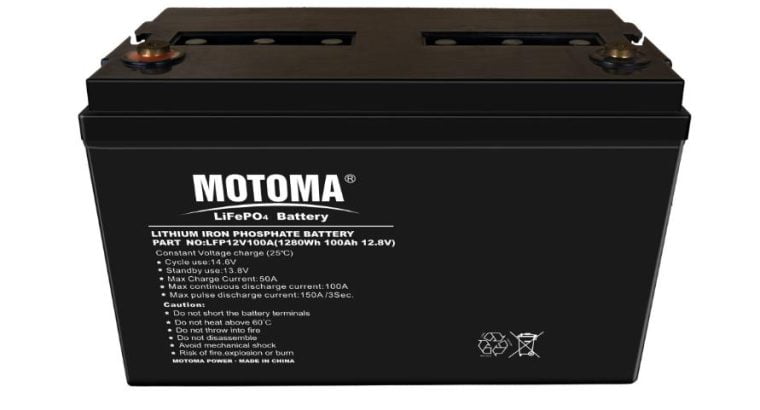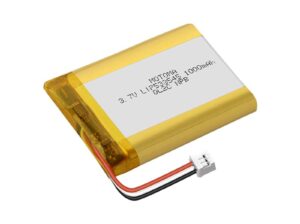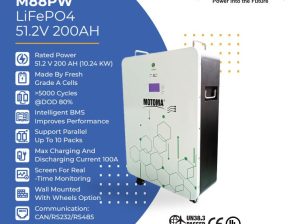Who invented the LFP battery?
Table of Contents
Introduction
The lithium-iron-phosphate (LFP) battery was invented in 1996 by the company BASF in collaboration with the universities of Berlin and Ulm in Germany. The LFP battery has become a popular choice for use in electric vehicles and stationary power storage applications due to its high energy density and its ability to be charged and discharged rapidly. It is also known for its excellent safety record and its ability to remain stable at high temperatures. This article will explore the history of the invention of the LFP battery, its advantages and disadvantages, and its current applications.
Who Was the Inventor Behind the LFP battery?
The invention of the lithium iron phosphate (LiFePO4) battery was credited to John Goodenough, a professor of engineering at the University of Texas at Austin. Goodenough and his team developed the LiFePO4 battery in the late 1990s, with the aim of creating a safer and more reliable alternative to the standard lithium-ion battery. The LiFePO4 battery uses a combination of elements to create a more stable power source. This battery is resistant to temperature and shock and has a longer life cycle than other battery types. LiFePO4 batteries are now used in a variety of applications, including electric vehicles, consumer electronics, and solar energy storage. Goodenough’s invention has revolutionized the battery industry, making it possible for people to use safer and more reliable energy sources.
The Early Years of the LFP battery: A History
The LifePO4 battery was first invented in the early 1990s by a research team at the University of Texas at Austin. This new battery technology was based on the concept of using lithium-ion chemistry to store electrical energy. The use of lithium-ion chemistry provided several advantages over traditional lead-acid batteries, including higher energy density, longer life, and lighter weight.
The research team at the University of Texas developed a lithium-ion battery that was composed of a lithium-iron-phosphate (LFP) cathode and a graphite anode. This battery was the first to use LFP chemistry and was named the LifePO4 battery. The LifePO4 battery was the first of its kind to be designed with a safe and reliable operating system, making it a major breakthrough in the field of battery technology.
The LifePO4 battery was initially used in consumer electronics, such as laptop computers and cell phones. However, its use soon extended to more demanding applications, such as electric vehicles and energy storage systems. The LifePO4 battery was also the first type of lithium-ion battery to be used in space exploration.
In the years since its invention, the LifePO4 battery has become the most widely used lithium-ion battery technology in the world. Its advantages have made it the choice of many manufacturers of consumer electronics, electric vehicles, and energy storage systems. It has also been instrumental in the development of new technologies,
Exploring the Advantages of LFP battery
Lithium iron phosphate (LiFePO4) batteries are an increasingly popular energy storage solution due to their many benefits. LiFePO4 batteries offer a unique combination of high energy density, long cycle life, low self-discharge, and safety.
Energy Density: LiFePO4 batteries offer a higher energy density than traditional lead-acid batteries, making them ideal for applications where weight and space are limited. This makes them perfect for electric vehicles, portable electronics, and any other application where a large amount of power is required in a small package.
Cycle Life: LiFePO4 batteries have a longer cycle life than lead-acid batteries, meaning they can be used for longer periods of time without needing to be recharged. This makes them a good choice for stationary energy storage applications, such as solar energy systems.
Low Self-Discharge: LiFePO4 batteries have a much lower self-discharge rate than lead-acid batteries, meaning they can hold a charge for longer periods of time without needing to be recharged. This is especially beneficial for applications where the battery is not used on a regular basis.
Safety: LiFePO4 batteries are much safer than lead-acid batteries due to their low flammability and low toxicity. This makes them a good choice for applications where safety is of paramount importance.
These advantages make LiFePO4 batteries a popular choice for a variety of applications. They
How LFP Batteries Have Revolutionized Energy Storage
In recent years, lithium iron phosphate (LifePO4) batteries have become increasingly popular, revolutionizing the way energy is stored. This technology has allowed for more efficient, cost-effective, and safer energy storage solutions around the world.
LifePO4 batteries are composed of a number of cells, each of which contains an anode, a cathode, and a separator. The anode and cathode are typically made of either graphite or lithium iron phosphate and the separator is designed to prevent electrical current from flowing between the two electrodes. These cells are then connected together in series and/or parallel to form a complete battery.
The main benefit of LifePO4 batteries is that they are much safer than other types of batteries, such as lithium-ion and nickel-metal hydride. This is because the lithium iron phosphate used in these batteries is much more stable than other types of lithium-ion batteries. This means that they are less prone to overcharging, short-circuiting, and other forms of damage. In addition, these batteries tend to have a longer lifespan than other types, making them more cost-effective in the long run.
LifePO4 batteries also have a much higher energy density than other types of batteries, meaning that they can store more energy in a smaller package. This makes them ideal for applications such as electric vehicles, as they can provide the necessary power in a lightweight and space-saving package.
Finally,
Analyzing the Impact of the LFP Battery on Modern Technology
The lithium iron phosphate (LifePO4) battery has had a huge impact on modern technology, revolutionizing the way in which we create, store, and use energy. This breakthrough battery technology has allowed us to access and use energy in ways that were previously thought to be impossible.
LifePO4 batteries are built with a cathode made of lithium iron phosphate, an anode made of graphite, and an electrolyte, which is typically a combination of lithium salts and organic solvents. This combination enables the battery to hold much more energy than conventional batteries, with a lifespan that is up to three times longer. The high energy density of LifePO4 batteries makes them an ideal choice for applications where a high amount of power must be stored in a small space.
The most obvious application of LifePO4 batteries is in electric vehicles. By using LifePO4 batteries, electric vehicle manufacturers are able to reduce the weight and size of the battery packs, while increasing their range and performance. This makes electric vehicles more efficient and cost-effective, allowing them to compete with traditional combustion engine vehicles on a level playing field.
LifePO4 batteries are also used in consumer electronics and portable devices. They offer a lightweight, powerful, and long-lasting alternative to traditional batteries, allowing users to get the most out of their devices. Smartphones, laptops, and tablets are all powered by LifePO4 batteries, allowing them to run for hours on a single charge.
Conclusion
The invention of the LiFePO4 (LFP) battery is credited to John Goodenough, a professor at the University of Texas at Austin. Goodenough, along with two of his graduate students, developed the LFP battery in 1996. The LFP battery has since become one of the most widely used rechargeable batteries, powering a variety of consumer electronics, electric vehicles, and other applications. Goodenough and his team have revolutionized the way we use energy and we owe him a debt of gratitude for his invention.
Comments (1)
You must be logged in to post a comment.




[…] LFP Batteries are similar to IMR Batteries in terms of their safety and long cycle life. However, LFP Batteries have a lower energy density than IMR Batteries, which means they can’t store as much energy. […]